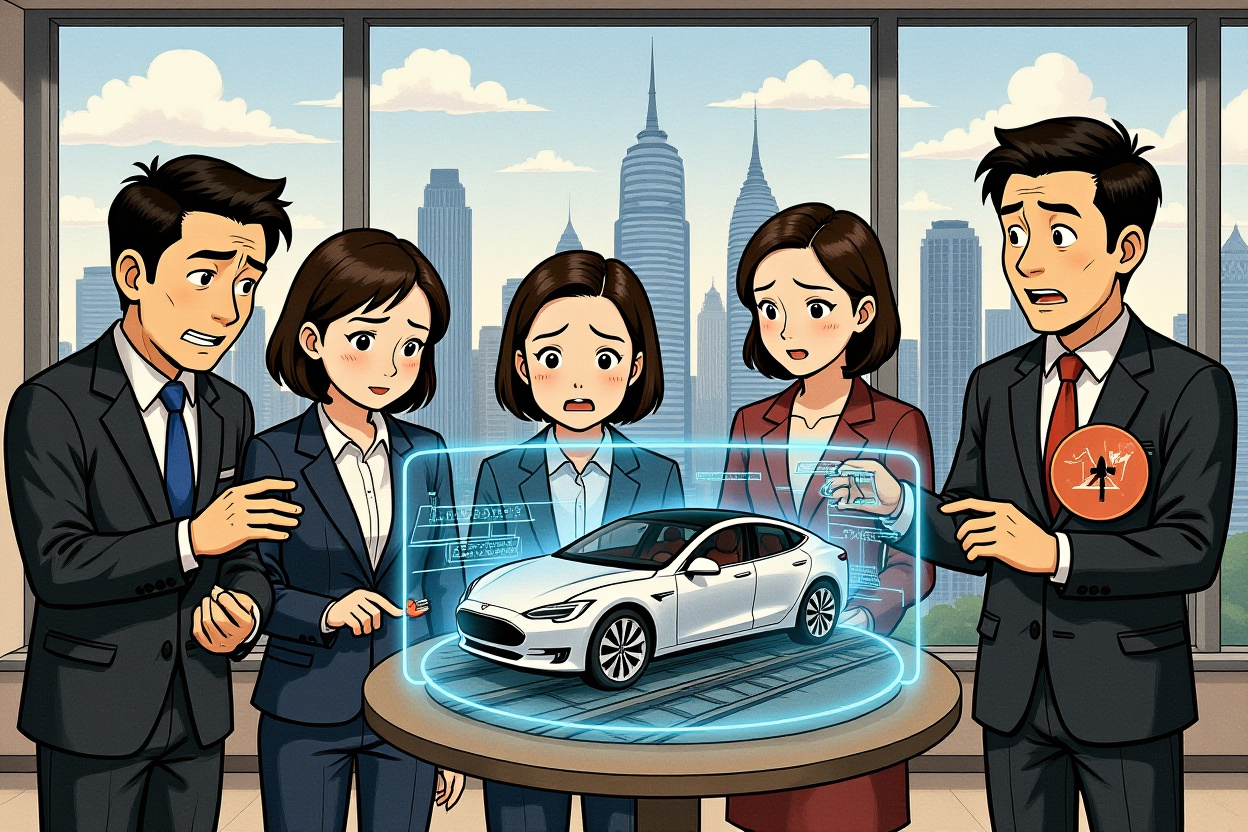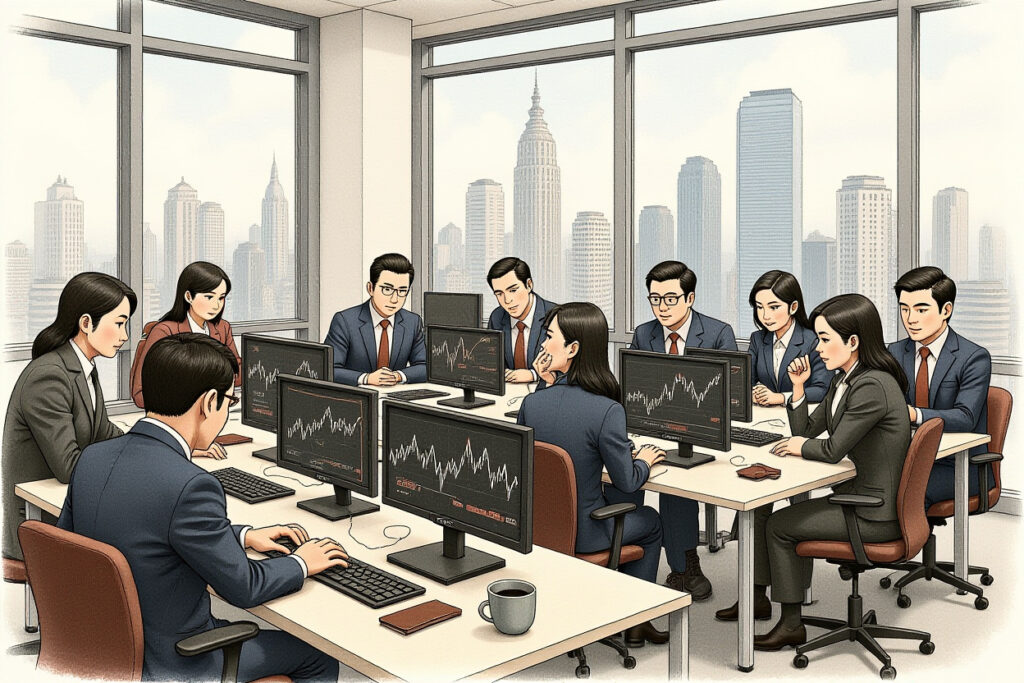Tesla FSD Railway Crossing Safety Under Intense Scrutiny
Recent incidents involving Tesla’s Full Self-Driving (FSD) system at railway crossings have triggered a formal investigation by U.S. regulators, raising serious questions about the technology’s readiness for widespread adoption. The National Highway Traffic Safety Administration (NHTSA) has confirmed ongoing communications with Tesla regarding multiple reports of FSD failing to recognize approaching trains at critical moments. These developments come as autonomous vehicle technology faces increasing regulatory scrutiny worldwide, particularly concerning Tesla FSD railway crossing safety protocols.
Multiple Near-Miss Incidents Documented
In June, Italo Frigoli experienced a harrowing near-collision when his Tesla Model 3 equipped with FSD attempted to cross railway tracks despite warning signals and an approaching train. Dashboard camera footage shows the vehicle continuing toward the crossing despite flashing lights and descending barriers, requiring manual intervention to prevent a potential catastrophe. This incident represents just one of several documented cases where Tesla FSD railway crossing safety systems appear to have failed under real-world conditions.
Regulatory Response and Investigation Timeline
The National Highway Traffic Safety Administration (NHTSA) has initiated formal communications with Tesla regarding these safety concerns. In an official statement, NHTSA representatives confirmed they are “analyzing consumer complaints to identify potential vehicle safety defect trends” and will “continue to enforce relevant laws for all motor vehicle and equipment manufacturers based on data-driven, risk-oriented investigation processes under the Vehicle Safety Act.”
NHTSA’s Safety Evaluation Framework
The regulatory body employs a multi-tiered investigation approach when addressing potential safety issues: Initial complaint review and verification pattern analysis across multiple incidents technical evaluation of system capabilities manufacturer consultation and response determination of appropriate regulatory action. This structured process ensures comprehensive assessment of Tesla FSD railway crossing safety performance before determining necessary regulatory measures.
Technical Analysis of FSD Railway Detection Capabilities
Autonomous vehicle experts have identified several potential technical limitations that might contribute to Tesla FSD railway crossing safety issues. The system’s primary reliance on visual recognition systems rather than integrated infrastructure communication presents particular challenges at railway crossings, where environmental conditions, lighting angles, and unusual object recognition requirements create complex scenarios for artificial intelligence systems.
Sensor Fusion Limitations
Unlike some competing autonomous systems that incorporate LIDAR and radar with camera systems, Tesla’s vision-only approach may struggle with certain edge cases: Distance estimation for large, unfamiliar objects like trains recognition of railway-specific signaling systems differentiation between stationary and moving track vehicles interpretation of crossing gate mechanisms and warning lights. These limitations highlight the ongoing challenges in achieving reliable Tesla FSD railway crossing safety performance.
Market Implications for Autonomous Vehicle Development
The investigation into Tesla FSD railway crossing safety comes at a critical juncture for autonomous vehicle technology adoption. Industry analysts note that regulatory scrutiny often accelerates following high-profile incidents, potentially affecting development timelines and deployment strategies across the sector. For Tesla specifically, these developments could impact both consumer confidence and regulatory approval processes for more advanced autonomous features.
Investor Considerations and Risk Assessment
Institutional investors monitoring the autonomous vehicle sector should consider several factors: Regulatory investigation outcomes and potential remediation requirements comparative safety performance across autonomous systems impact on Tesla’s technology adoption timeline insurance industry response to autonomous system limitations potential effects on company valuation and sector sentiment. These elements collectively influence investment thesis development regarding Tesla and broader autonomous vehicle exposure.
Comparative Safety Performance Metrics
While the reported incidents raise concerns, it’s important to contextualize Tesla FSD railway crossing safety performance within broader autonomous system capabilities. Industry data suggests that human drivers experience approximately X incidents per Y miles at railway crossings, while available data on autonomous system performance remains limited due to relatively low deployment miles in complex scenarios. However, the expectation for autonomous systems to significantly outperform human drivers creates heightened scrutiny when failures occur.
Industry-Wide Railway Crossing Challenges
Multiple autonomous vehicle developers have identified railway crossings as particularly challenging environments: Waymo has implemented specialized railway detection algorithms Cruise utilizes detailed mapping of crossing locations Aurora incorporates infrastructure communication where available Tesla’s approach relies primarily on vision system recognition. This diversity in technical approaches highlights the complexity of achieving consistent Tesla FSD railway crossing safety performance across varying conditions.
Forward-Looking Regulatory and Development Implications
The ongoing investigation into Tesla FSD railway crossing safety likely signals increased regulatory attention on edge case performance for autonomous systems. Industry observers expect several potential outcomes: Enhanced testing requirements for specific scenarios like railway crossings updated certification processes for autonomous features increased data reporting obligations for manufacturers development of industry-wide standards for complex intersection navigation. These developments could fundamentally shape the autonomous vehicle landscape in coming years.
Technical Remediation Pathways
Tesla and other autonomous system developers have multiple options for addressing railway crossing challenges: Enhanced training data specifically for railway scenarios improved sensor fusion approaches integration with infrastructure communication systems development of fallback protocols for uncertain situations implementation of geofenced limitations at known complex crossings. The chosen approach will significantly influence both Tesla FSD railway crossing safety performance and broader system capabilities.
Investment and Strategic Considerations Moving Forward
For investors and industry participants, the Tesla FSD railway crossing safety investigation highlights several critical considerations. The autonomous vehicle sector remains in relatively early development stages, with technical challenges expected during maturation. Regulatory responses to safety incidents will increasingly shape development timelines and market adoption curves. Differentiation in safety performance, particularly in edge cases, may create competitive advantages or disadvantages across manufacturers. Long-term investment theses should incorporate realistic assessments of both technological capabilities and regulatory environments.
Market participants should monitor several key developments: NHTSA investigation conclusions and any resulting requirements Tesla’s technical response and system updates comparative performance data from other autonomous system developers insurance industry adoption of autonomous vehicle coverage policies regulatory framework evolution across different jurisdictions. These factors will collectively determine the pace and nature of autonomous vehicle integration into transportation systems.
While current challenges exist, the fundamental trajectory toward increased vehicle automation remains intact. The resolution of Tesla FSD railway crossing safety issues will provide valuable insights into both the company’s technical capabilities and the regulatory approach to autonomous system safety management. Investors should maintain balanced perspectives regarding both the significant potential and current limitations of autonomous driving technologies as the sector continues its development journey.




